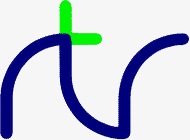
MODE7.COM requires an EGA with at least 128K of RAM, a VGA or an SVGA.
Because of differences in the hardware available, the following versions of the Viewdata emulator are provided:
MODE7.COM This is the 'standard' version of the emulator. It is for a computer fitted with an EGA or a standard VGA or SVGA. MODE7B.COM This version is for a computer fitted with a non-standard VGA or SVGA.
from the MS-DOS prompt. If it is not in the current directory or directory search path, you will need to enter the full path name.MODE7<Enter>
MODE7.COM uses up about 3K of memory which will be released only on re-booting MS-DOS (or returning to Microsoft WindowsTM).
The Viewdata display modeis not immediately active; it will usually be activated from an application program (BBCBASIC(86), for example), but it may be selected for test purposes, etc by entering:
from the MS-DOS prompt. SETMODE7.COM must be in the current directory or the directory search path or you will need to use the full path name.SETMODE7<Enter>
You can return to the normal mode by typing
MODE7.COM may be loaded from within BBCBASIC(86), but since it is memory resident it will leave a large 'hole' in memory when BBCBASIC(86) is exited.MODE CO80<Enter>
All Viewdata display features other than those mentioned in this Annex are provided as specified in the Broadcast Teletext Specification (September 1976). These include colour, graphics (contiguous and separated), background colour, flashing, double-height (text and graphics) and held-graphics.
As with the BBC Micro MODE 7, the ASCII codes for # (hash) £ (pound) and _ (underscore) are 'shuffled' so as to display as expected, rather than using the Viewdata codes. To force use of the standard Viewdata codes (such as would be required for displaying a Prestel or Teletext page) set bit 7 of the stored characters.
The two procedures below are taken from the demonstration program 'MODE7DEM.BBC'. The first procedure converts all Conceal characters to Escape characters. The second converts all Escape characters to Conceal characters.
180 DEF PROCreveal 190 X%=POS:Y%=VPOS:VDU 30 200 FOR N%=1 TO 24*40 210 IF (&FF00 AND USR&FFF4)DIV256=&98 VDU &9B ELSE VDU 9 220 NEXT 230 PRINTTAB(X%,Y%); 240 ENDPROC 250 : 260 : 270 DEF PROCconceal 280 X%=POS:Y%=VPOS:VDU 30 290 FOR N%=1 TO 24*40 300 IF (&FF00 AND USR&FFF4)DIV256=&9B VDU &98 ELSE VDU 9 310 NEXT 320 PRINTTAB(X%,Y%); 330 ENDPROC
|
HOME
|